
Greenwich Village, or simply the Village, is a neighborhood on the west side of Lower Manhattan in New York City, bounded by 14th Street to the north, Broadway to the east, Houston Street to the south, and the Hudson River to the west. Greenwich Village also contains several subsections, including the West Village west of Seventh Avenue and the Meatpacking District in the northwest corner of Greenwich Village.
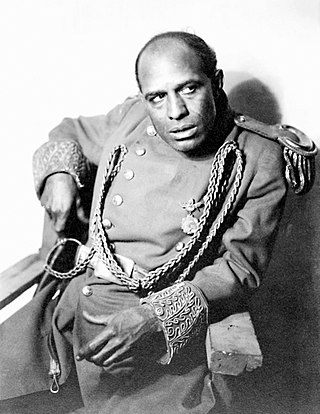
The Emperor Jones is a 1920 tragic play by American dramatist Eugene O'Neill that tells the tale of Brutus Jones, a resourceful, self-assured African American and a former Pullman porter, who kills another black man in a dice game, is jailed, and later escapes to a small, backward Caribbean island where he sets himself up as emperor. The play recounts his story in flashbacks as Brutus makes his way through the jungle in an attempt to escape former subjects who have rebelled against him.

Robert Edmond Jones was an American scenic, lighting, and costume designer.
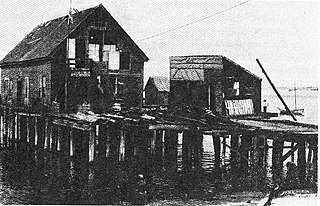
The Provincetown Players was a collective of artists, people and writers, intellectuals, and amateur theater enthusiasts. Under the leadership of the husband and wife team of George Cram “Jig” Cook and Susan Glaspell from Iowa, the Players produced two seasons in Provincetown, Massachusetts and six seasons in New York City, between 1916 and 1922. The company's founding has been called "the most important innovative moment in American theatre." Its productions helped launch the careers of Eugene O'Neill and Susan Glaspell, and ushered American theatre into the Modern era.
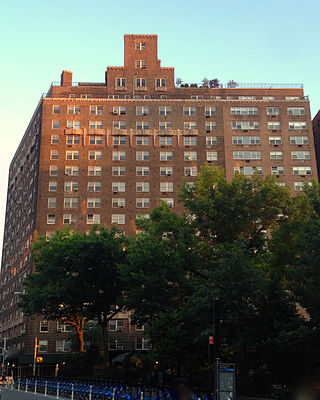
The West Village is a neighborhood in the western section of the larger Greenwich Village neighborhood of Lower Manhattan, New York City. The West Village is bounded by the Hudson River to the west and 14th Street to the north. The eastern boundary is variously cited as Greenwich Avenue, Seventh Avenue, or Sixth Avenue, while the southern boundary is either Houston Street or Christopher Street.
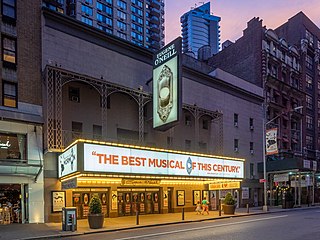
The Eugene O'Neill Theatre, previously the Forrest Theatre and the Coronet Theatre, is a Broadway theater at 230 West 49th Street in the Theater District of Midtown Manhattan in New York City. The theater was designed by Herbert J. Krapp and was constructed for the Shubert brothers. It opened in 1925 as part of a hotel and theater complex named after 19th-century tragedian Edwin Forrest. The modern theater, named in honor of American playwright Eugene O'Neill, has 1,108 seats across two levels and is operated by Jujamcyn Theaters. The auditorium interior is a New York City designated landmark.

The Cherry Lane Theatre is the oldest continuously running off-Broadway theater in New York City. The theater is located at 38 Commerce Street between Barrow and Bedford Streets in the West Village neighborhood of Greenwich Village, Manhattan, New York City. The Cherry Lane Theatre contains a 179-seat main stage and a 60-seat studio.
As the new medium of cinema was beginning to replace theater as a source of large-scale spectacle, the Little Theatre Movement developed in the United States around 1912. The Little Theatre Movement served to provide experimental centers for the dramatic arts, free from the standard production mechanisms used in prominent commercial theaters. In several large cities, beginning with Chicago, Boston, Seattle, and Detroit, companies formed to produce more intimate, non-commercial, non-profit-centered, and reform-minded entertainments.

George Cram Cook or Jig Cook was an American theatre producer, director, playwright, novelist, poet, and university professor. Believing it was his personal mission to inspire others, Cook led the founding of the Provincetown Players on Cape Cod in 1915; their "creative collective" was considered the first modern American theatre company. During his seven-year tenure with the group, Cook oversaw the production of nearly one-hundred new plays by fifty American playwrights. He is particularly remembered for producing the first plays of Eugene O'Neill, along with those of Cook's wife Susan Glaspell, and several other noted writers.
The urban campus of New York University (NYU) is located in Manhattan, and is around Washington Square Park in Greenwich Village, and also is in MetroTech Center in Downtown Brooklyn. NYU is one of the top three largest landowners in New York City.

Hedgerow Theatre is a theatre company based in Rose Valley, Pennsylvania, near Philadelphia, founded in 1923. It was "for many years the only true U. S. professional repertory theater." The building is a contributing structure in the Rose Valley Historic District listed on the National Register of Historic Places.

MacDougal Street is a one-way street in the Greenwich Village and SoHo neighborhoods of Manhattan, New York City. The street is bounded on the south by Prince Street and on the north by West 8th Street; its numbering begins in the south. Between Waverly Place and West 3rd Street it carries the name Washington Square West and the numbering scheme changes, running north to south, beginning with #29 Washington Square West at Waverly Place and ending at #37 at West 3rd Street. Traffic on the street runs southbound (downtown).
Provincetown is a New England town located at the very tip of Cape Cod, Massachusetts.

Village Preservation is a nonprofit organization that advocates for the architectural preservation and cultural preservation in several neighborhoods of Lower Manhattan in New York City. Founded in 1980, it has advocated for New York City designated landmark status for a variety of sites like the Stonewall Inn and Webster Hall. The organization and its Executive Director, Andrew Berman, have been described as influential in New York real estate, while some of its activities to prevent development and to support restrictive zoning have attracted criticism.

The South Village is a largely residential area that is part of the larger Greenwich Village in Lower Manhattan, New York City, directly below Washington Square Park. Known for its immigrant heritage and bohemian history, the architecture of the South Village is primarily tenement-style apartment buildings, indicative of the area's history as an enclave for Italian-American immigrants and working-class residents of New York.

The Van Tassell and Kearney Horse Auction Mart is a building in East Village, Manhattan, New York City. The building was constructed in 1903-04 to the designs of Jardine, Kent & Jardine in the Beaux-Arts Style. It originally served as a horse auction mart that catered to New York's elite families, including the Vanderbilts and Delanos. Each Tuesday and Friday, Van Tassell & Kearney held auctions in the building. Though carriages remained an important part of the business, most advertisements and newspaper stories about the mart concerned the sale of horses, particularly high-priced ribbon winners, polo ponies, hunters, and thoroughbreds. Other sales were devoted to breeding stock and coach horses, including a large group of horses co-owned by Alfred W. Vanderbilt and Robert L. Gerry in 1906.
Andrew Berman is an architectural and cultural heritage preservationist in New York City. He is known for being an opponent of new housing construction in New York City.

Ida Rauh was an American suffragist, actress, sculptor, and poet who helped found the Provincetown Players in 1915. The players, including Susan Glaspell, George Cram Cook, John Reed, Hutchins Hapgood, Eugene O'Neill, and others, first performed in a structure owned by Mary Heaton Vorse in Provincetown, Massachusetts. Later, the group moved to a theater on MacDougal Street in Greenwich Village. Rauh directed the first production of O'Neill's one-act play Where the Cross Is Made for the opening of the permanent Provincetown Playhouse at 133 Macdougal Street in November 1918, and in the Village she became known for her intensely emotional acting.
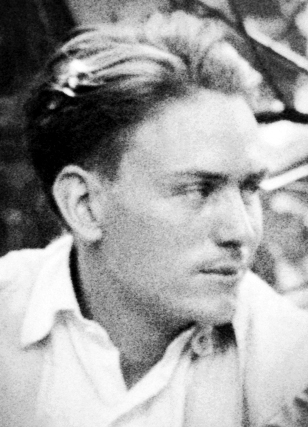
Cleon Francis "Throck" Throckmorton was an American painter, theatrical designer, producer, and architect. During the early 1920s, Throckmorton resided in Washington, D.C., where he created sets for stage productions by Howard University, a historically black college.
Him is a three-act play written by poet E.E. Cummings. The play was first published in November 1927 and premiered in New York during the spring of 1928. Him is sometimes called a precursor to Theatre of the Absurd but has also been described as being surrealistic and in the German expressionist tradition. It is heavily influenced by Freudian psychology as well as popular culture of the 1920s.
















